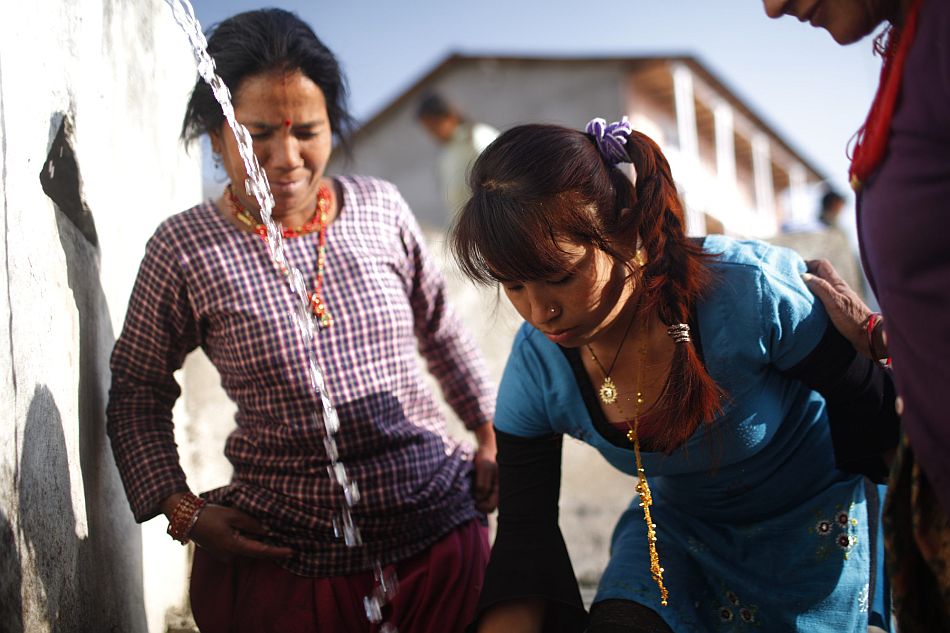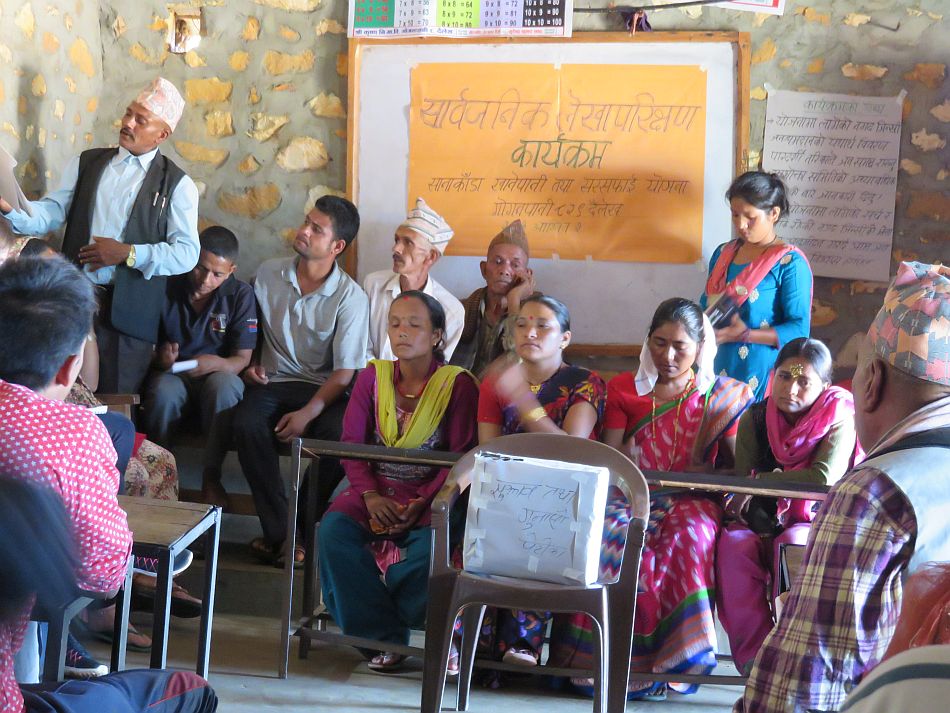Public hearings and audits have the potential to reduce corruption, empower citizens and improve water resource management, new report shows.
By Hari Dhungana, Associate Professor of Development Management and Administration at Nepal Open University, Nepal and Floriane Clement, Senior Research Fellow at DYNAFOR, Université de Toulouse, French National Research Institute for Agriculture, Food and Environment (INRAE) France, former Country Representative for IWMI in Nepal

Improving accountability has become an important objective of governance reforms worldwide over the past two decades. This has seen the rise of social accountability tools that aim to close the gap between what citizens want and what governments actually do. While several studies have analyzed the effectiveness of these tools in contexts such as participatory budgeting, in which citizens help decide how public money is spent, only a few studies have looked at the tools’ use in the water sector.
A new IWMI research report is helping to fill this gap, as part of a multi-country study on social accountability and water integrity. Presenting findings from Nepal, the report documents and analyzes the implementation of public hearings and public audits in water service delivery.
Using the case study of a donor-funded water resource management scheme in two rural districts, the research team examine how these mechanisms have contributed to increased accountability, transparency and citizen participation. They also discuss their potential to reduce corruption.

Combatting corruption
Nepal has been heavily aid-dependent for over half a century. Aid can enable opportunities for bribes and other forms of corruption by channeling funds from donors through government agencies or NGOs to the local level. This can undermine democratic decision-making and create new lines of accountability upwards from NGOs to donors, rather than downwards to local populations.
The government has, in recent years, taken several steps to fight corruption. In the water sector specifically, the Water, Sanitation and Hygiene Sector Development Plan (2016-2030) emphasizes the importance of trust, accountability and integrity for effective projects and service delivery. Several donors have also integrated social accountability measures in their Nepal-based development programs.
Challenging authority
The research team studied the implementation and outcomes of public hearings and public audits for the Sanakanda and Kalikhola scheme, located in Dailekh and Achham districts respectively. The results show that these accountability tools have provided a platform for water users to deliberate on how water supply schemes are implemented and improved access to budgetary information. At the same time, the evidence suggests that the use of formal accountability tools is insufficient to enhance voice, transparency and accountability unless they are combined with informal tactics.
This is illustrated by an incidence of corruption in the Kalikhola scheme. The village maintenance worker – who could understand the scheme’s technical details and budget – accused the chairperson of the water user committee of inflating the cost of trolleys needed to transport construction materials and pocketing the difference. The case was discussed during a public audit and the chairperson eventually paid back the money before leaving the area in disgrace.
Beyond the corruption aspect of the case, it is interesting to note that the worker found it easier to speak up because he was not related to the chairperson through kinship or political ties. This relates to the wider issues in Nepal of patronage (influential leaders and groups receive favors with the expectation they will provide favors in return) and challenging authority. In particular, when community leaders come from the local elite, achieving accountability through formal procedural mechanisms might be difficult. As such, the report recommends introducing informal accountability mechanisms rooted in peer pressure and an understanding of local power dynamics.
Institutional reforms
Secondly, the evidence makes a strong case for moving social accountability mechanisms beyond the narrow financial focus of the past. Generally, water service delivery in the Global South is plagued by inequities in water allocation and distribution that have little to do with misappropriation of funds. These inequities have a range of causes, from nepotism and gender discrimination to design problems that affect how a water scheme can and should perform. It is thus important to widen downward accountability to a broader range of actors, including donors and implementing NGOs, and to different forms of water injustices.
Lastly, the research reveals the gap between Western ideals of deliberation and local cultural norms as well as social barriers related to caste, gender and class relations. This calls for institutional reforms that challenge dominant and unfair power structures. These reforms could involve working with local governments to help them become downwardly accountable and supporting inclusive grassroots organizations that raise awareness of citizens’ rights to information and mobilize civic action.
Without these broader institutional changes, the study concludes, doubts will remain about the extent to which social accountability tools can reduce corruption, empower citizens and improve water resource management.

